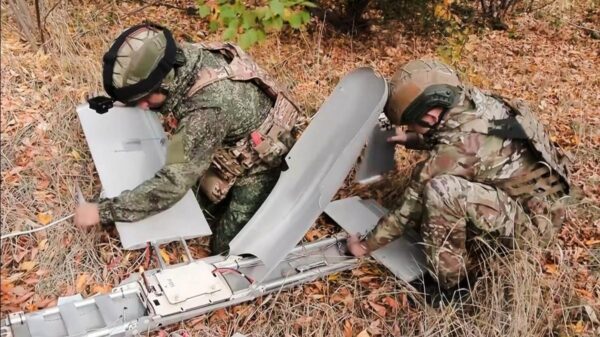In a groundbreaking advancement for materials science, researchers have developed a camera capable of capturing images at a shutter speed of just one trillionth of a second. This technology, revealed in 2023, is approximately 250 million times faster than conventional digital cameras, enabling scientists to observe the dynamic movements of atoms within materials.
The newly created system, termed the variable shutter atomic pair distribution function (vsPDF), allows for unprecedented insights into a phenomenon known as dynamic disorder. This occurs when clusters of atoms within a material shift and reorganize in response to factors such as vibrations or temperature changes. Understanding this behavior is crucial for enhancing material properties and reactions.
Unlocking the Secrets of Atomic Movement
According to Simon Billinge, a materials scientist at Columbia University, “It’s only with this new vsPDF tool that we can really see this side of materials. With this technique, we’ll be able to watch a material and see which atoms are in the dance and which are sitting it out.” The ability to capture such rapid movements provides a clearer picture of atomic interactions, akin to using a high-speed camera in sports photography to avoid motion blur.
The vsPDF technique distinguishes itself by utilizing neutrons to determine the position of atoms, rather than relying on traditional photographic methods. By tracking how neutrons interact with materials, researchers can adjust the effective shutter speed, allowing for the precise observation of dynamic disorder while filtering out static disorder, which refers to the normal vibrations of atoms that do not contribute to a material’s functionality.
This innovative approach not only reveals the intricacies of atomic behavior but also offers potential applications in improving materials used in energy conversion technologies. For instance, the researchers focused on germanium telluride (GeTe), a material known for its ability to convert waste heat into electricity and vice versa. The vsPDF camera demonstrated that GeTe maintains its crystalline structure across various temperatures, yet exhibits increased dynamic disorder at higher temperatures, where atomic motions correlate with the material’s electric polarization.
Implications for Future Technologies
Understanding these atomic dynamics enhances knowledge of thermoelectric materials, which can lead to the development of advanced equipment, such as those powering Mars rovers in low-light conditions. The insights gained from the vsPDF system could eventually allow scientists to design better materials for various applications, from energy storage to electronic devices.
Despite the promising capabilities of the vsPDF technique, researchers acknowledge that further work is necessary before it becomes a widely adopted tool in materials science. They anticipate that this method will become standard for reconciling local and average structures in energy materials, as stated in their paper published in Nature Materials.
With this breakthrough, scientists have taken a significant step toward unraveling the complexities of atomic behavior, paving the way for innovations that could transform multiple fields within materials science and engineering.


































































